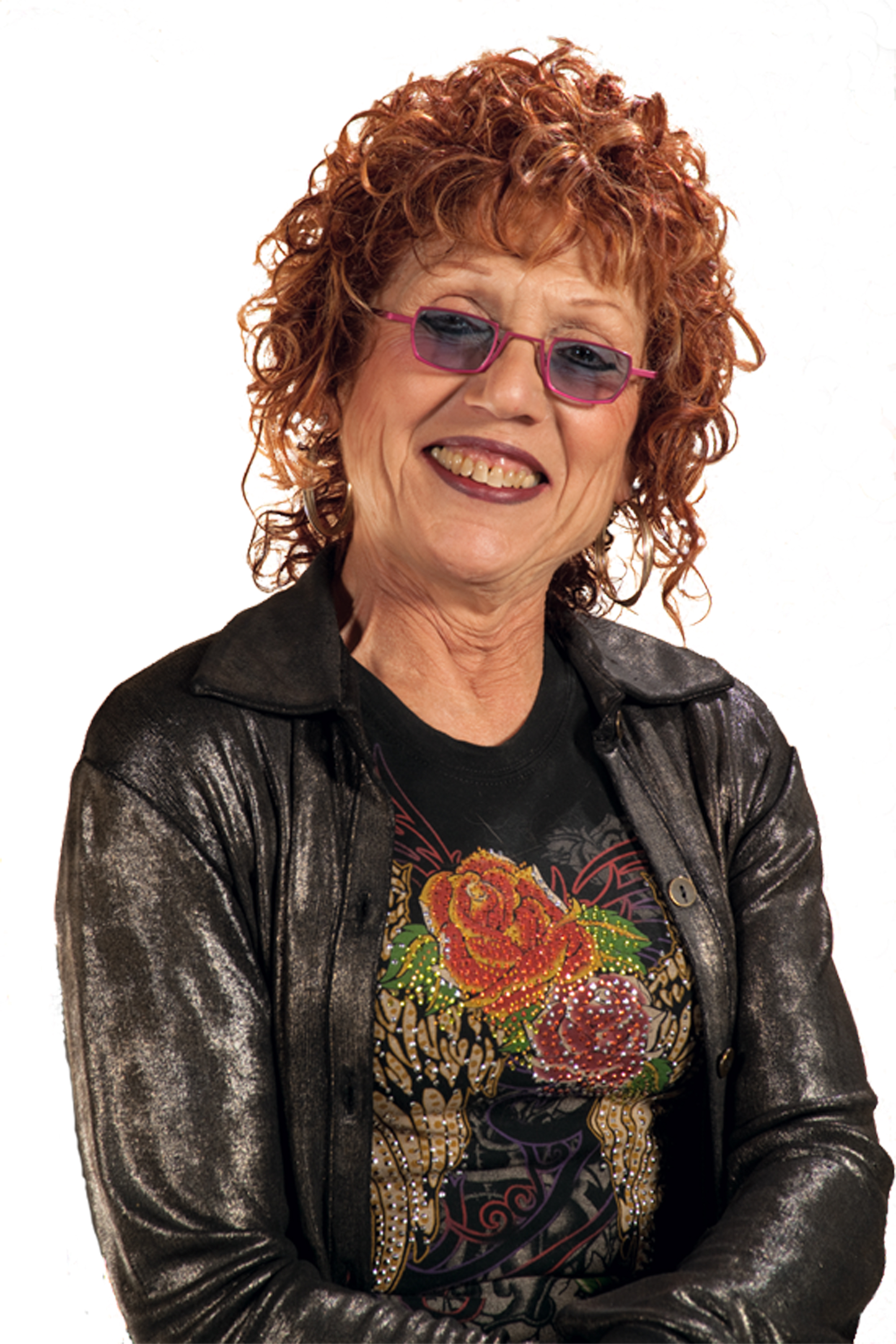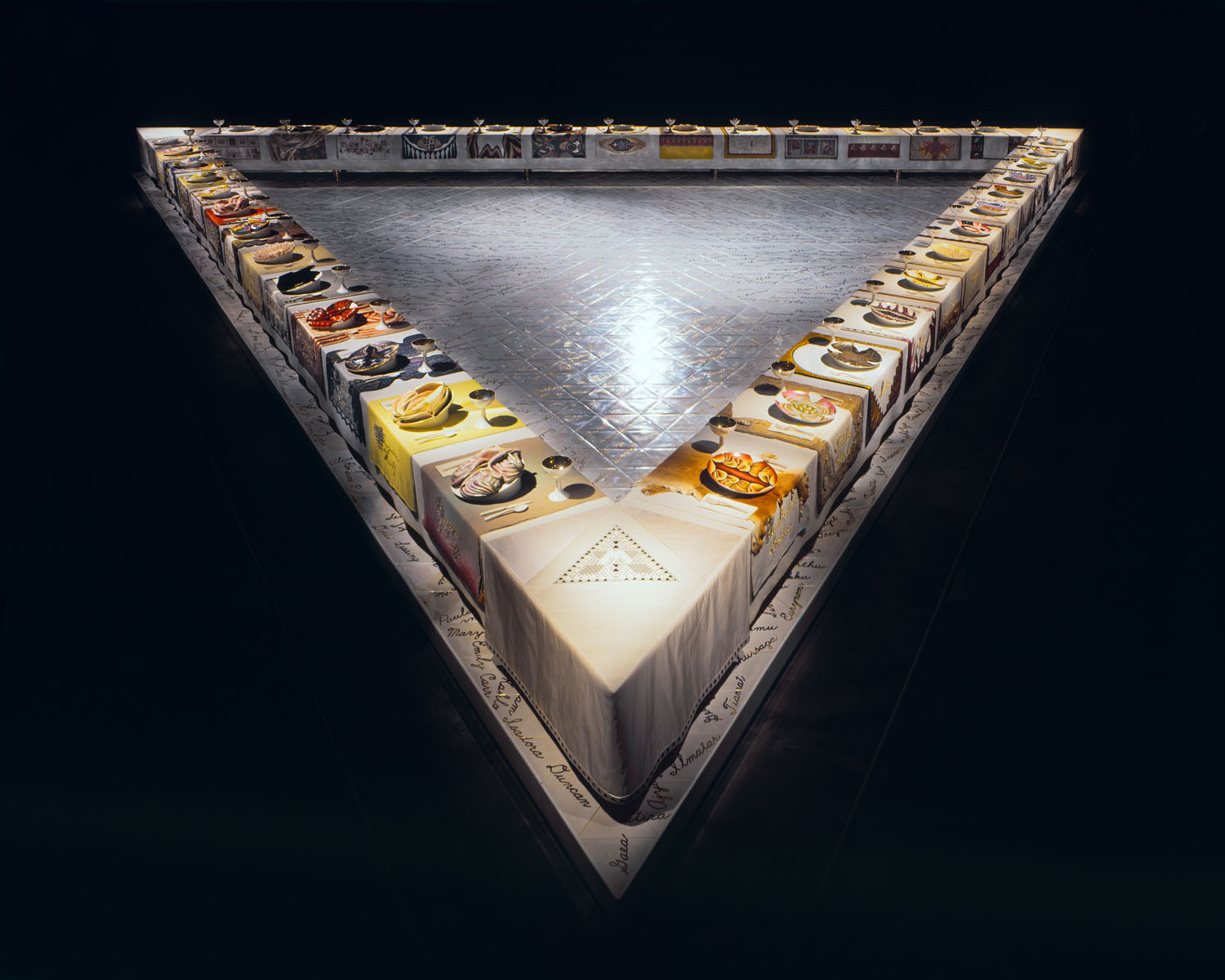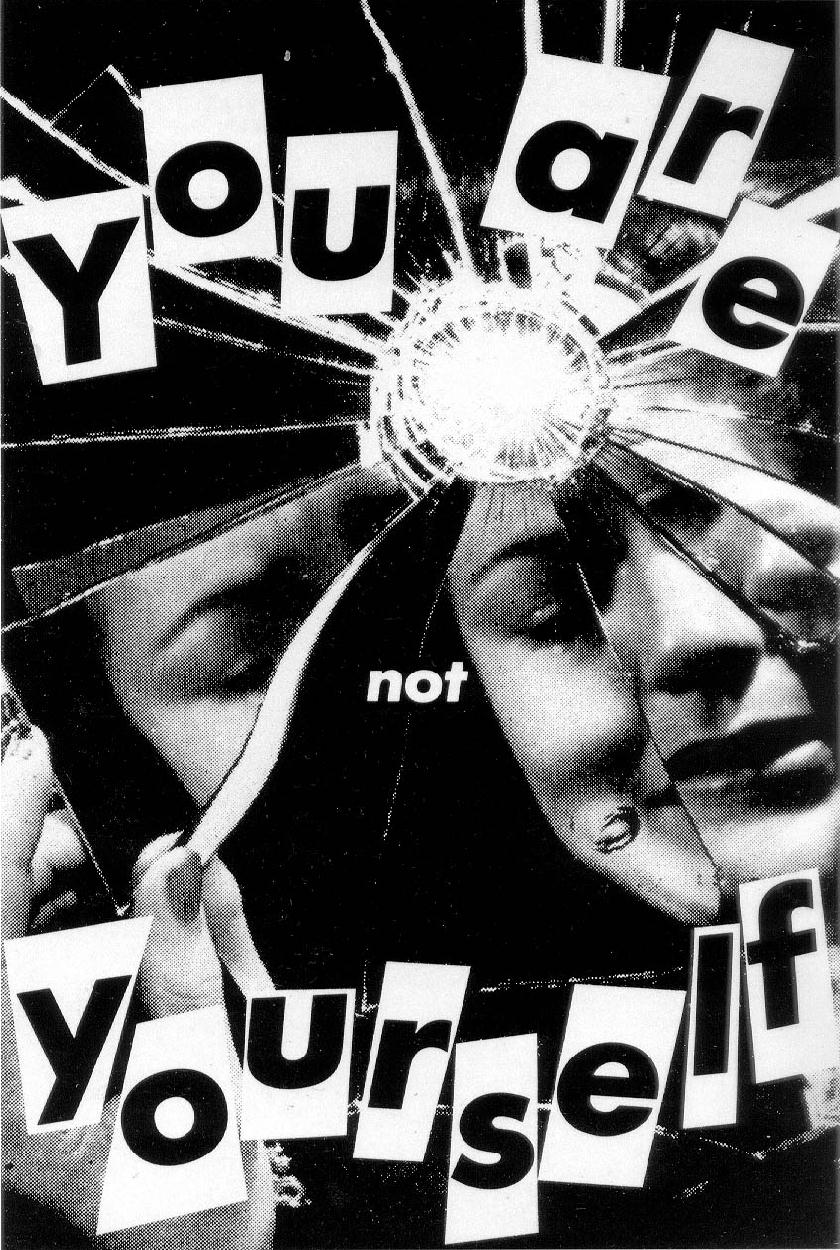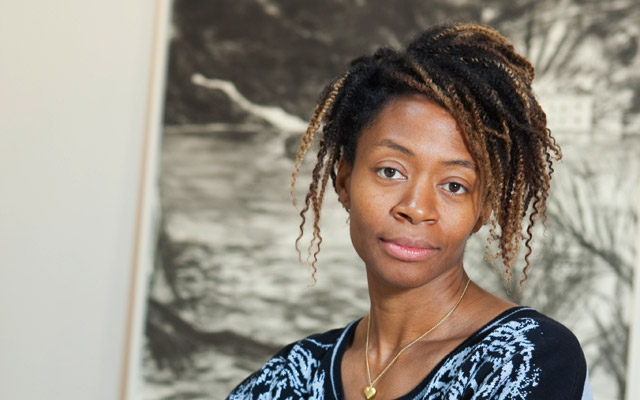Karan Patel
Professor Cacoilo
Art and Women
18 April, 2017
Post 4- Contemporary Female Artists
While many famous female artists have displayed their works for centuries, there are many contemporary artists that create great works to this day. By exposing, challenging, and critiquing societal roles in their own distinctive methods in their artwork, these contemporary artists furthered the feminist art movement through their works. The five artists who are widely known for these protests are: Cindy Sherman, Judy Chicago, Barbara Kruger, Kara Walker, and Yoko Ono who all produced a variety of artwork including: photography, performance art, painting, etc.
Cindy Sherman
 |
| Cindy Sherman |
Cindy Sherman is a female artist that was born on January 19, 1954 in Glen Ridge, New Jersey where she was the youngest out of her five siblings. Unlike many artists, her parents did not come from an artistic background and thus did not discover her artistic interest until college where she first set out to study painting. However, she eventually felt holding a brush left her unfulfilled with it’s limitations. After dropping her paintbrush, she felt an instant connection picking up a camera.
 |
| Cindy Sherman, Untitled Film Stills, 1977-1980 |
Her "Untitled Film Stills" series, was a work that consisted of a collection of photographs she took of herself. In her photos she challenged many cliches or stereotypes set in the 20th century concerning roles of women such as housewives, the prostitute, etc. Sherman leaves her photos open-ended which in turn leaves most of the interpretation to the viewer of her artwork, however her poses in the photographs as well as the lighting and symbolism infer that she means to challenge patriarchy. This series is one of her most widely known works, and has made her an even more influential female artist in the artistic society.
Judy Chicago
 |
| Judy Chicago |
 |
| Judy Chicago, The Dinner Party, 19 |
According to Art Story.org, Judy Chicago was “one of the pioneers of Feminist art in the 1970s, a movement that endeavored to reflect women's lives, call attention to women's roles as artists, and alter the conditions under which contemporary art was produced and received” (Art Story.org) Chicago was detrimental to the feminist art movement, her artwork mainly included needlework, ceramic decoration, and glass art. One of her works that is considered the greatest would be “The Dinner Party,” the work is a monumental installation consists of a massive banquet table in the shape of a triangle set in place for 39 guests, and each setting was a plate with a vagina painted on it. It was considered to be a controversy among adult males for it’s “lewdness”, however it was also considered revolutionary as it defied traditional art and supported the feminist movement in a new way. The Dinner Party’s significance “lies in its defiance of fine-art tradition by representing a feminine history suppressed by patriarchal society” (Art History.org). By defying norms set by a patriarchy, Chicago was able to express that women had been suppressed for too long and needed to be united for feminism to succeed.
Barbara Kruger
 |
| Barbara Kruger |
 |
| Barbara Kruger, You are not Yourself, 1981 |
Barbara Kruger was born in Newark New Jersey, in 1945; she did not come from an artistic backgrounds, her mother was a secretary while her father was a chemical technician. Like the other artists, her distinctive artwork largely protested another aspect of society “From her use of clearly legible font to her jarring palette of red, white, and black, each element of the final artwork is crucial to its effectiveness as both an artistic expression and a protest against facets of postmodern life” (Art Story.org). Using many appropriated images from various magazines as backgrounds for her work, she puts confrontational phrases or statements on the front (usually centered) to challenge societal injustices against women. She uses the language of advertising to critique the media. She uses the images of advertising in order to use it against itself by portraying exactly what's wrong with it.
Kara Walker
 |
| Kara Walker |
 |
| Kara Walker, Scene of McPherson's Death, 2005 |
Yoko Ono
 |
| Yoko Ono |
Yoko Ono was a contemporary Japanese artist born in 1933 in Tokyo; her mother was a painter which gave her exposure to the artistic world at a young age. Ono was a well known creator of Dada art, she made many types of performance art that challenged female roles set by society.As described by Art Story.org "Ono was one of the strongest feminist voices to emerge from the art world in the 60s”(Art Story.org). One of Ono’s most famous pieces would be “Cut Piece (1964), a first for feminist art performance, invited audience members to take turns cutting off her clothes using a pair of scissors. It also brought the audience into close contact with the artist, which was a new concept and crossed traditional boundaries” (Art Story.org). This performance art piece was significant in showing how women in society are often put in a position where they have to give up everything as well as addresses the topic of sexual violence against women.
In conclusion, these five female artists have utilized their own artistic methods in protesting roles forced upon people by society. Without their creative, popular, and powerful artwork, the art world wouldn’t be the same and many female artists around the world would be lacking true heroes.
Work Cited
"Judy Chicago Biography, Art, and Analysis of Works." The Art Story. N.p., n.d. Web. 18 Apr. 2017.
"Barbara Kruger Biography, Art, and Analysis of Works." The Art Story. N.p., n.d. Web. 18 Apr. 2017.
"Kara Walker Biography, Art, and Analysis of Works." The Art Story. N.p., n.d. Web. 21 Apr. 2017.
The Nelson-Atkins Museum of Art - Collections. N.p., n.d. Web. 21 Apr. 2017.
"Scene of McPherson's Death. Harper's Pictorial History of the Civil War, (Annotated) - Kara Walker." Google Arts & Culture. Google, n.d. Web. 21 Apr. 2017.
"Yoko Ono Biography, Art, and Analysis of Works." The Art Story. N.p., n.d. Web. 21 Apr. 2017.
No comments:
Post a Comment